“Airwing 103, Lubbock Approach, radar contact two-two miles southeast of the Plainview VOR, descend to five thousand one hundred, expect the ILS 17R, altimeter 29.83.”
“Airwing 103 is out of eight for 5.1…Approach, can you confirm the latest ATIS?”
“Airwing 103, Lubbock Preston Smith 0754Z weather: 300 overcast, 1/4 mile in fog, temperature 59, dewpoint 59, wind 210 at 11, altimeter 29.83…runway 17R RVRs: touchdown 1800, mid 1200, rollout 1200.”
“Roger…Airwing 103.”
“Airwing 103, turn left heading two one zero degrees, 2 miles east of the localizer, you’re cleared for the ILS 17R approach, contact tower 120.5 approaching KEEVE.”
“Understand, cleared for the ILS 17R… Airwing 103.”
“Lubbock tower, Airwing 103 is over KEEVE for 17R…”
“Airwing 103, Lubbock tower, you’re cleared to land 17R, latest RVR…touchdown 1200, mid1200, rollout 1000…previous company reported seeing the lights right at minimums. Runway lights are at the highest setting…”
“Airwing 103…understand, cleared to land.”
“Airwing 103, Lubbock tower, I show you 1/4 mile east of the centerline…
Airwing 103, did you copy?
Airwing 103?
Airwing 103…Lubbock tower…do you read?”
“Fire Rescue.”
“Fire, this is tower, we’ve lost contact with an Airwing flight 103 two minutes ago. He was on short final, and his company flight taxiing to the ramp said he saw a bright flash off the end of 17R. He’s a Cessna 310 inbound from Love, two souls on board, 3 hours of fuel.”
“Roger tower…we’re rolling…”
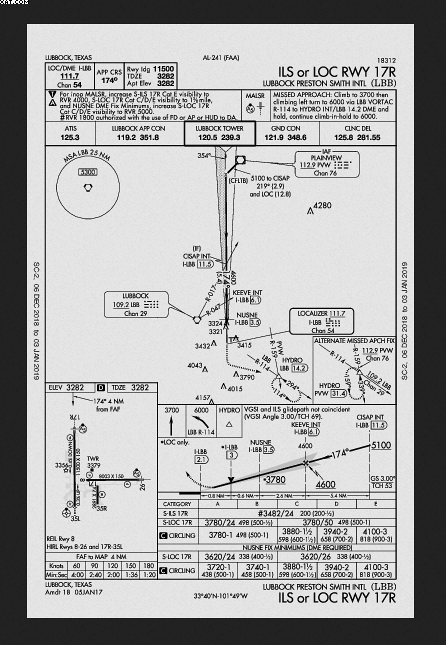
(Runway 17R ILS approach plate LBB)
Four minutes after their last transmission to the Lubbock tower controller, my college friend John (and his “ride along” passenger”) were dead.
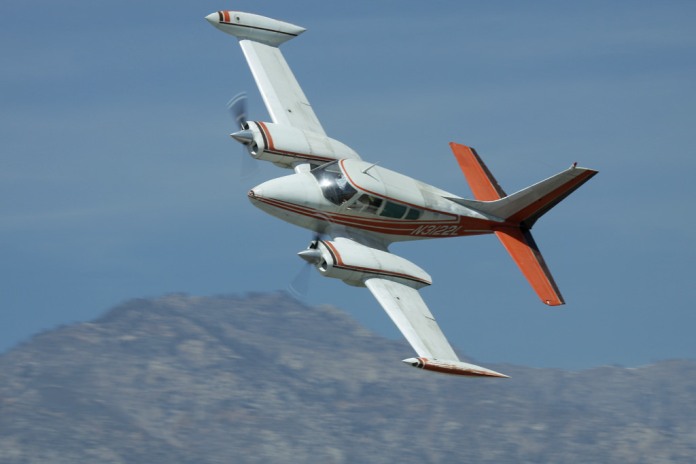
(Cessna Model 310)
At approximately 2:30 on Saturday morning the 13th of November, 1978, he and his young protege died in a bright ball of fire. The NTSB report would state:
DATE: 78/11/13 LOCATION: LUBBOCK, TX TIME: 0235
AIRCRAFT DATA: CESSNA 310J N310BJ DAMAGE: DESTROYED
INJURIES: FATAL – CREW 1, PX – 1
DEPARTURE POINT: DALLAS, TX INTENDED DESTINATION: LUBBOCK, TX
PHASE OF OPERATION: LANDING: FINAL APPROACH
TYPE OF ACCIDENT: COLLISION WITH GROUND/WATER: CONTROLLED
PROBABLE CAUSE(S): IMPROPER IFR OPERATION
FACTOR(S): WEATHER – LOW CEILING/FOG
PILOT DATA: FL. INSTR., AGE 22, 1420 TOTAL HOURS, 110 IN TYPE, INSTRUMENT RATED.

(the NTSB Report for Airwing 103)
The world would never know why Astrowing Airlines Flight 103 crashed. Small aircraft like the Cessna 310J have never been equipped with cockpit voice or data recorders, so any conclusions on my part are conjecture born of 40 years (and almost 40,000 hours) spent in various cockpits. Within a few months, I would find myself as “Airwing 105” on the very same instrument approach (inbound from Roswell, NM), in the dead of the night, in identical weather conditions… and on that night, I scared the proverbial shite out of myself. You learn later in your IFR life, when you find yourself nearing the end of a low overcast, fog shrouded ILS, and you reach your DH (“decision height”), that when you glance up …if you see the “runway environment” and are safe to continue the approach…you IMMEDIATELY go back on instruments (you at the very least split your scan enough to keep the flight and NAV gauges as part of the equation).
Why? Because your senses can kill you. On the night mentioned, I arrived at that very same DH of 200′ AGL (3482′ MSL), looked up, had the approach lights in sight (at least flashing through the murky fog), and felt like I had enough visual cues to continue safely. The fog blurred everything horribly, and with the “lights on the highest setting”, the flashes were blinding. My inner ears told me I was in a slight right bank…but I wasn’t. I instinctively went back on instruments, fought the overpowering urge to bank back to the left, and somehow got the machine on the runway. As I rolled out in the fog, I was cussing myself for ALMOST doing something hugely stupid; something that could easily have been fatal.
My thoughts flashed back to my college training, and I gave a silent “thank you” to my friend and mentor Gordon Shattles. He was the flight instructor that fate matched me with during my training for the coveted Instrument Rating, but sadly he would perish a few years later in a mid-air collision. He continually hammered me on the DH “stay inside on the instruments” thing, and even had me fly the little blue and white Cessna 172 to a touchdown WHILE WEARING THE IFR HOOD…thus seeing only the instruments. He taught me volumes about instrument flying, but he also taught me something more. He taught me what a professional aviator acted like. He showed me that being a “professional” is as much an attitude as it is an aptitude. He may very well have saved my life on that dark, stormy night.
In my humble opinion, John may have become a bit disoriented (as mentioned earlier, the fog and the bright lights do not play well together), somehow allowed the little twin Cessna to drift off of the centerline, and impacted short of the runway. Couple spatial disorientation with this fact about the Cessna 310 (I received my Multi-engine training in an “A” model -310 a few years earlier). While in my opinion, it’s one of the most beautiful and graceful light twins ever made, it has a horrible trait of wing rocking when the wingtip fuel tanks are not emptied. Again, this is just an informed opinion, but I feel that this MAY have contributed to John’s inability to stay on the center-line.

(Cessna 310J…truly a beautiful machine.)
In the end, only the Good Lord knows what happened on that fateful night. The rest of us are left with questions and sadness.
God bless you John and Gordon…aviation is a fickle paramour.
(My journey as “freight dog”…er, night freight pilot)
A few weeks ago, after positioning my RV trailer in Phoenix for the winter, I found myself on a solo drive back toward the frozen tundra of western Wisconsin. I was inbound to my horse farm to RON before beginning an airline trip to Seoul, so I was using the two-day drive to relax, listen to some tunes, catch up on the news (and NFL games), and generally just chill in the left seat of my new Ram 3500.

(Leaving my farm in Wisconsin on a cold November day…temperature 11 degrees Fahrenheit…wind chill a lovely 04 degrees! So I swapped THIS…)

(…for THIS! My new “winter home” in Phoenix…temperature…a horrible 65 degrees!)
Having left “the valley of the sun” well before dawn, and turning East-bound at snow-covered Flagstaff still in the nocturnal hours, I was treated to a spectacular sunrise as only the high desert of the USA southwest can offer. Next on the Interstate 40 East hit parade would be the wind-swept towns of Winslow and Tucumcari, and a scant few hours later, a lunch break in my old stomping grounds of Albuquerque, New Mexico.

(A gorgeous sunrise…matched only by amazing sunsets.)
I was first introduced to this beautiful little city, gently nestled between the Rio Grande River and the Sandia Mountains, long ago in the last year of the decade known as “the disco 70s”. This 10-year span gave us classics the likes of: Apple Inc., the AMC Gremlin, Watergate, The Grateful Dead, the movie “The Godfather”, and who can forget Billie Jean King spanking Bobby Riggs (don’t forget the “Thrilla in Manila”)? But more importantly (?), the final year of the “me decade”, gave the world a neophyte 22-year-old pilot, replete with college degree, spanking new flight Master Logbook, and an unlimited wheel-barrel full of optimism.

(Cresting the hill just west of Albuquerque, New Mexico. The Sandia Mountains frame the eastern city limits.)
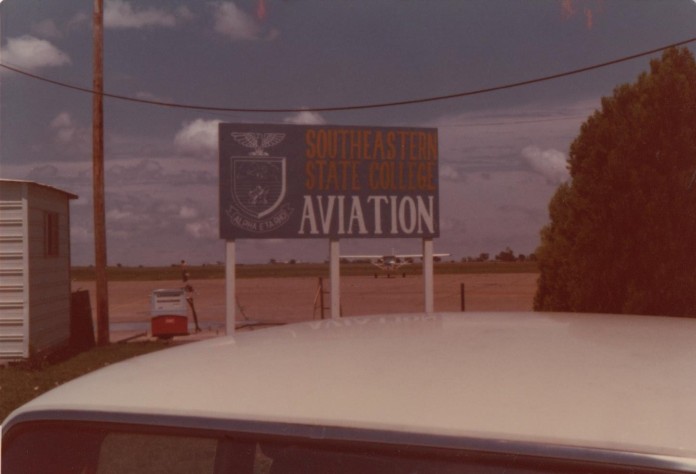
(Southeaster Oklahoma State University Aviation ramp, circa 1977.)
I was newly graduated with a Bachelor of Science degree from an aviation university in Oklahoma, and was a freshly minted Commercial/Instrument, Multi-engine rated pilot (and Flight Instructor), and the proud owner of just over 1000 hours of flight time. In other words, I was “God’s gift to aviation”. I was about the best thing to hit the airways since the “Lone Eagle” himself, and could fly anything with wings on it, through the eye of needle in the midst of a Kansas tornado! Granted, I had scared myself enough times to pepper my flying skills with just enough humility (and respect for the Aviation Gods) to NOT actually think I was the best. But trust me when I tell you this; if you ever meet a pilot that doesn’t have just a “bit” of swagger in their gait, pass him/her by. I’m dead serious. It’s actually a very valuable tool in your pilot survival bag of tricks. You not only have to believe you can do it (engine fires, “hard IFR’ approaches, check rides, medical exams, etc.), you have to KNOW YOU CAN DO IT.
Also, in my case, consider this: I was raised by a decorated combat helicopter pilot whose motto was something to the effect of, “I may not be THE BEST rotary-winged aviator in the world…but I’ll just have to do until that person is born!” Lol…growing up, I heard him spout that line many times (with his movie star smile), and to say that I loved that man’s flying persona is an understatement.

(The man…)
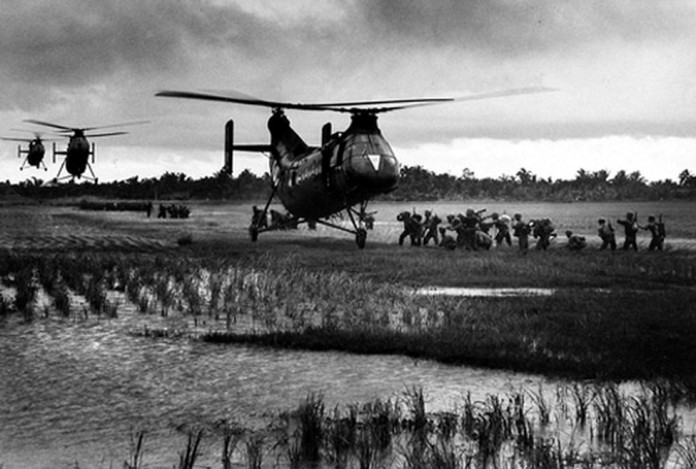
(…his world in combat, circa Southeast Asia 1963-64.)
I had accepted my college degree on a cold, wet December evening in 1978, then promptly relocated to take a job as a staff flight instructor for Fort Worth School of Aviation (coincidentally, I had obtained my PPL at the same flight school in 1974). It was a (mostly) OK job, but my crop of students included doctors, lawyers, accountants and generally a mish-mash of other “professional” types that had neither the time, nor the inclination to actually study and put in the time to LEARN the material before the next day’s lesson. This was in stark contrast to my days as an instructor for the university where all my students were highly motivated, dreamt of nothing but one day wearing those coveted airline stripes and piloting “heavy iron” to far-away destinations (like yours truly did). They showed up prepared, eager and more than ready to tackle the lesson. They were a joy to teach…these older, “professional” types…not so much.
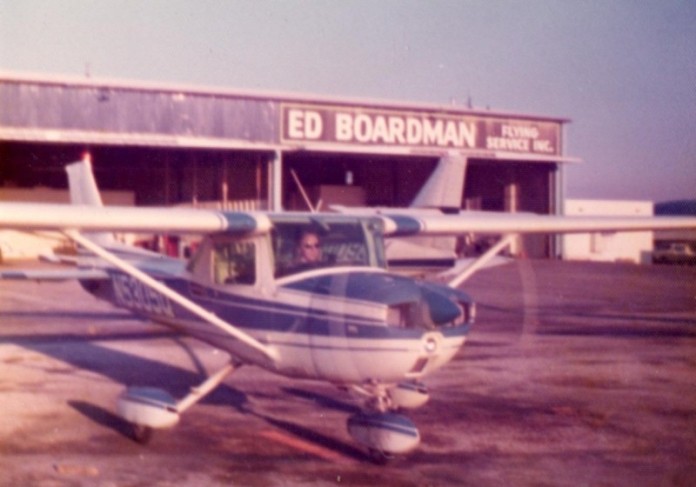
(Yours truly as a newly minted Private Pilot graduate of Ft. Worth School of Aviation, summer of 1974.)
After several weeks of frustration spent in the skies over north Texas, I was beginning to feel the pangs of a dead-end position staring me in the face. So, when approached by my long-time friend (and college roommate) Rick to consider a job flying my own machine on a scheduled route (and kissing the life of being an underappreciated CFI “adieu”), I jumped at the chance. The job would entail single-pilot freight runs, winging packages in small twin-engine aircraft, to small (and large) destinations, all in the dead of the night. I had flown with Rick on his freight run for this outfit on many occasions in the past, and was fairly familiar with how it all worked. He had since graduated to the big leagues to crew the majestic silver “luxury liners” of American Airlines, so I surely felt that the life of a freight dog just might be a great way to earn a ticket to “the show”.


(Top: the Aero Commander 680V that my buddy Rick flew Dallas-Little Rock-Columbus, OH, Little Rock-Dallas every night…awesome machine. Bottom: Back of his head at FL 190 somewhere over middle America in the dead of the night.)
Unfortunately, the outfit running this operation was known as less than awesome, and truth be told, had a pretty horrible reputation in and around the Love Field area. I “interviewed” with one of the owners, and as I recall, had a whopping two questions to answer. Question 1: had I ever flown a Piper Navajo (the steed in which I would be assigned), my answer was a truthful, “no”. Question 2: “OK, well have you ever flown a Piper Aztec?”. My answer was an unequivocally NOT-truthful, “yes”. He seemed to be fine with that (without looking at the logbooks provided to prove such a statement I might add), so off to the PA-31-350 Navajo Chieftain sitting on the Love Field tarmac we went. The following FAR Part 135 checkride would determine my fate for the next several months.

(A Piper Navajo PA31-350…WAY nicer than my mount, N9066Y.)
As I recall, it went generally pretty well. Again, the total amount of flight time I had logged in a Piper Navajo could be counted on NO fingers, so he talked me through the pre-flight, the engine starts, etc. With his help (and the judicious use of the checklists), off we launched into the sunny, blue sky. A few touch and go’s, an engine out ILS, and some “air work” later, we turned back toward Love Field for an ILS (Backcourse) approach to RWY 31L. I was flying under the IFR hood, and after completely screwing up the approach (anyone that’s ever flown a back-course approach will appreciate that statement), he took the hood off my sweat-drenched head, and treated me to an ugly sight. I could see that I had pooched up bracketing the localizer back course so badly that we were essentially pointing about 30 degrees offset to the left of the 31L centerline. Coincidentally, this lined us up with the rather LARGE buildings of downtown Dallas…probably not good. He asked if I knew what I did wrong…a feeble “yes” was offered, and he ended the checkride with the following statement…”OK, never do that again, you’re hired…be in Albuquerque in 3 days to take over the Roswell/Lubbock run.”
Simple as that. From village idiot to “airline pilot” in one sentence.
(Side note to the above job offer.)
Placing a phone call to my dear parents to give them the big news (“Mom, Dad, I’m an Astrowing Airlines pilot!”), I was nervously anticipating hearing the thoughts of another aviator whose opinion I highly respected (my Dad). He asked the appropriate questions regarding the company, the route, and the machine. My answers were as follows: “The company is shady at best, the route is Albuquerque/Roswell/Lubbock/Roswell/Albuquerque every night, and the airplane is a worn-out, Exxon Valdez oil leaking, “50 missions over Schweinfurt”, rag-tag Piper Navajo that probably should be collecting spiders in a junk yard somewhere. Well Dad…what do you think…should I take the job or not?”
After a rather pregnant pause, he offered me this…and it was the perfect answer to my query:
“Well, it’ll be good experience if you live through it….and if you don’t… it won’t matter will it?” (rolling out in the fog after scaring the crap out of myself on that low, foggy ILS mentioned above comes to mind…”and if you don’t…it won’t matter will it?” This man knew that I had just enough experience to kill myself…)
The next several months are a bit of a blur. Fortunately, during the early years of my career, I was blessed with the compulsion to keep detailed records of my flights, hoping that one day I would find myself at a REAL airline, interviewing for a REAL job, and having to prove the answers provided on said airlines job application. Later that year, I would be called to offer my logbooks at a job interview for, (what was known in those days as) a commuter airline (Scheduled Skyways of Fayetteville, Arkansas flying turboprop SA226 Metroliners). I would take that job, and spend the next five years plowing the skies over the southern USA in a “trauma-tube” (our nickname for the Metroliner). I would move on from the world of night-freight, thus going from the proverbial “sand lot” world of airlines, to the “minor league” world, hoping someday to work my way to the “big league” world. It would come several years (and a volume of Logbook yarns) later.
I will add though. When asked if I’ve ever flown night freight…I’m proud to say…”yep, I was a freight dog for a while.”
The following are snippets from my days as an “Airwing” pilot:
I would routinely show up a few hours before my scheduled nightly launch of 2230 hours. This was due to two personality flaws of mine…my total lack of a social life in Albuquerque, and my love of flying machines. The first I can write off as a cost of living the “my days are my nights, and my nights are my days” lifestyle, and the second…well, I can only blame my Dad. He took me through the magic portal into the world of aviation (see previous Logbook entries about such), and began a life-long love affair with flying machines. As a youngster I would instinctively follow his lead and look up whenever an airplane (or helicopter) would pass over. I learned this habit from him, and to this day, I simply cannot resist the urge to look skyward and identify the object of my passion. (I remember seeing the legendary golfer…and jet-rated pilot…Arnold Palmer doing the very same thing in the midst of a golf match. A pilot, is a pilot, is a pilot…)
On this particular day, I found myself at the tarmac fence outside the FBO (fixed base operator…basically the folks that run the General Aviation side of the airport) watching the busy comings and goings of the late afternoon/evening. The Albuquerque airport is one of a handful of unique flying fields, for it is not only the home for hundreds of daily commercial and general aviation flights, but it’s also the location of Kirtland Air Force Base. On any given day, the cornucopia of flying machines for one to behold is nothing short of awesome; everything from (in those days) “giant” Boeing 707s, to smoke belching, ear shattering F4 Phantoms, to mosquito like little Cessna 150s and Piper Cubs. For an aviation voyeur, it’s heaven.
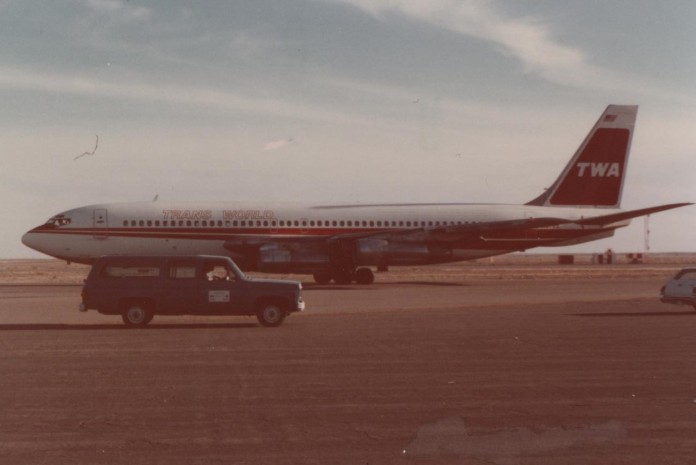
(TWA Boeing 707 taxiing to the gate in ABQ on a Spring afternoon in 1979…sadly, that iconic airline would cease to exist shortly after I made it to the “major airlines” a few years hence. I was extremely privileged to occupy their cockpit jumpseats a few times, and it was a true honor. In fact, I may have a yarn or two about that…)
Shortly after being treated to a gorgeous, late winter sunset, I noticed the general “pace of life” at the FBO had ratcheted up to about DEFCON 2. It seems that a “VIP” flight was inbound and they were all running around like headless chickens anticipating its arrival. Shortly thereafter, I was treated to the arrival of a bird the likes of which I had never seen before. A few minutes earlier, I began to see bright landing lights shining down a long final approach to RWY 8. Within minutes, a four-engine turbo-prop machine gracefully touched down and majestically taxied to the ramp. She was mostly silver (with a strange “penguin” looking logo on the tail), had the lines and air of a stately “lady of royalty” about her, and when the four Rolls-Royce engines ceased their high-pitched whine, out stepped a line of folks that were swiftly whisked away in a convoy of limousines.

(A machine with sleek, graceful lines…the Vickers Viscount.)
Shortly thereafter, a rather scruffy looking dude wandered up to the fence and we casually began a conversation. He had a full beard, long wind-swept mop of brown hair, faded jeans, t-shirt, and a totally cool, black leather jacket with the same logo on the back. When asked who was on the jet, he offered, “Oh, that’s Fleetwood Mac.” I was gob-smacked, for I had sat in row 4 of the Dallas Convention Center not two years earlier, rocked to their epic music, and totally fell in love with Stevie Nicks (she felt the same about me by the way). I have been a huge fan of their work for many years (to include the PRE- Nicks & Buckingham days of Bob Welch and company). Wow, I thought…Fleetwood Mac…how cool.
He didn’t seem to be as impressed as I was, and our conversation continued. I found out from this dude (I just assumed he was a “roadie” for the band), that they were inbound from Los Angeles, and that the machine sitting quietly before us was an immaculate version of a British Vickers Viscount. He DID seemed to be as awe struck and impressed with this flying piece of British history as I was. He was quite friendly, and in a few minutes asked about yours truly; where I was from, if I was a pilot, why I was at the airport this time of the evening, etc. After offering my story, I made the off-handed comment that it must be fascinating to be the pilot winging famous people around the world in a beautiful, glamorous flying machine such as this one. With that utterance, he turned to me, stuck out his hand, and introduced himself as THE CHIEF PILOT FOR THIS OPERATION! He handed me his business card and told me to send him a resume after I had built up a few hundreds more flying hours! He calmly turned and walked away, leaving a surprised and stunned (and gob-smacked for the second time that evening) young pilot watching him climb the stairs to that marvelous aircraft, and enter a world that I couldn’t begin to imagine.
(Me? Stevie? Together forever? [she KNEW I would “never break the chain] We BOTH also knew it would never work…)
**********
The following are a few quotes from my Logbook:
DATE: 3/7-8/1979 A/C MAKE AND MODEL: PA-31 A/C IDENT MARK: N9066Y FROM: ABQ
TO: ROW/LBB/ROW/ABQ FLT NO.: AWG 105/106
REMARKS: “DIODE BURNED-OUT / SHORTED AGAINST BULKHEAD…LOST “ELECTRICALS” (THANK GOD FOR FLASHLIGHTS).
A few nights later:
DATE: 3/13-14/1979 (SAME OTHER STUFF)
REMARKS: “0” VISIBILITY (BLOWING DUST) / PUROLATOR COURIER :45 LATE DUE LATE EL PASO PLANE / “0” VIS (BLOWING DUST) ABQ, 35 KT GUSTS.
The following night:
DATE: 3/14-15/1979
REMARKS: RIDER “ERNIE” / :45 DELAY THUNDERSTORMS / BAD SHIMMY NOSEWHEEL / IFR ROW: WX:500′ OVC, 2 NM VIS RAIN AND FOG / IFR LBB: WX: 200′ BKN 500′ OVC 2 NM VIS LIGHT RAIN AND FOG / IFR TO ABQ / 1/4″ OF NOSEWHEEL RIM BROKEN OFF ON LANDING / LOTS OF SPARKS.
And the very next night after that:
I distinctly remember the next evening’s flight (after the nosewheel was changed while I did my day beauty-sleep thing). The crappy weather system had moved out of the ABQ area (it was clear), but east of the Sandia Mountains, it was low ceilings and fog all the way to the east coast. I launched, proceeded to Roswell, and held for about 1/2 an hour while a Texas International DC-9 was conducting its ILS approach. After they reported to Ft. Worth Center that they were clear of the runway, it was my turn. Again, it’s the middle of night…. God only knows why T.I. was running so late…the Roswell ATC facility had long since closed up shop for the day, and we were now in a “no radar” environment. It basically means you do everything through Ft. Worth Center…and since they can’t see you on radar on the ground in ROW, you have to let them know you’re down so they clear the next victim for their approach. I shot the ILS (my Logbook says the weather was 300′ OVC, 1-mile VIS in light rain and fog), and taxied to the ramp to meet the courier, and off-load/up-load my next load of packages.
The weather in LBB was (for lack of a better aviation term) “horse-shite”. When I got my briefing from the weather weenies at the Flight Service Station in Ft. Worth, they said the report from the last hour at Lubbock was: 100′ sky obscured, 1/4-mile VIS in rain and fog. Since this was below my landing minimums, I called the “boss” at Love Field to discuss our next move, and commenced to get a 1st class, “Texas sized” ass chewing. He wanted to know why I was even on the phone with him! He expected me to load up, fuel up, launch for LBB, hold until the weather improved, and if it didn’t, then return to ROS. Great idea…one big problem. Roswell’s weather didn’t meet legal weather minimums to file it as “Alternate” for my IFR flight plan (and the next closest place that did was ATLANTA, GEORGIA…roughly 1200 miles east!). He was hearing none of it. I protested, he yelled louder, I protested more (and offered that maybe we should just wait it out on the ground), and he blew a gasket. I told him that I was exercising my “Pilot in Command” authority to delay, and he promptly fired me on the spot!
(“Mom, Dad…guess what? I’m moving home and living on your couch until I’m 40! I heard Wal-Mart is hiring cart boys!”)
In the end, we were both snake-bitten. For me the weather improved enough to launch toward Lubbock (see above concerning the ILS to RWY 17R I shot that night…thanks again Gordon!), and for him…he was forced to re-hire me, and realize that he was saddled with a head-strong, smart-assed, wet-behind-the-ears, young pilot that was either too smart (or too scared…) to be bullied into an FAA violation. I prefer to think it was the former, but I admit it was most probably the latter. It wouldn’t be the last time I was to be fired (and promptly re-hired) during my early flying career…but that’s a tale for some other time.
**********
We routinely carried “riders”. These were usually kids far younger than ourselves (“kids”…hell, I was barely shaving), and they were usually building flight time toward their Commercial Pilot License. As stated above, I spent many nights as a “rider” with my friend Rick on his various Airwing freight runs.
Many of the “freight dog” flights with Rick stand out in my memory banks…here’s one of them.
One night well past nightfall, he was tasked with a little “milk-run” hop from Dallas’s Love Field over to Abilene; a mere 150 some odd nautical miles as the crow flies west. We would be flying a rather worn out (see a trend here?) V35 Beechcraft Bonanza for this mission, and after loading it up with about a zillion little packages, Rick took the left seat and I was tasked with plopping my young ass into the right seat and closing the ONE passenger door on the machine. As Rick brought the Continental engine to life and began the time-honored tradition of calling Clearance/Ground/Tower to get us airborne, I fumbled with the door…not being able to get it closed. He finally reached across me, mumbling something about the door being retarded (or maybe it was me he was mumbling about), and slammed Mr. Beechcraft’s hatch hard enough to secure it for take-off.
Roughly an hour later we arrived to a “zombie-dead” Abilene Reginal (“Interplanetary”) Airport, taxied to the deserted ramp, and shut down to wait on the courier so we could swap loads and head home. When I reached for the door handle, remembering his forceful movement to close it, I turned the lever and gave it a huge push to free us from this cramped little world. Nothing. Tried it again…same result. Rick (mumbling about either my heritage or the airplanes) reached across me, grabbed the handle and instead of pushing it, he pulled it (a little trick to release the locking pin). He gave a big grunt and SUCCESS! Well, not actual success, but the handle did move…it came off in his hand!
We were trapped! We both tried putting the handle back on to the spindle to engage the locking mechanism…nothing! After several attempts, we did the only thing two steely-eyed, square-jawed, night freight heroes could do…we started yelling “HELP” like two little French school girls! We opened the “storm window” (it’s a little tea-pot sized window next to the pilot that folds in so you can get some ventilation into the cockpit), and began yelling for all we were worth. Nothing…it was after all, the middle of a warm Texas summer night, and all NOT-crazy pilots were at home counting sheep…or Boeings.
We were eventually released from our self-induced imprisonment, when a sound asleep kid in the “line shack” heard us, and wandered over to see what all the racket was about. He was there to gas up the nocturnal freight runs, and must’ve gotten quite a giggle out of the little blue and white Bonanza sitting on the ramp, with two future airline line professionals in it squealing like a couple of stuck hogs!
I don’t remember how we got the door to function on the return flight to Love Field…maybe when we parked on the Love Field ramp we simply did a “reunion tour” of our wildly popular, “a Capella: ballad that featured one word….” HELP!”
**********
As I steered the big truck east out of downtown ABQ a few weeks ago, I glanced up to see if it was still there. I glanced repeatedly toward the area that was so prominently a focus of attention almost forty years ago, but Father Time had done what Father Time does, and it was as if it had never happened.
A last snippet from my days (or more accurately, my nights) living in Albuquerque as a fledgling aviator…
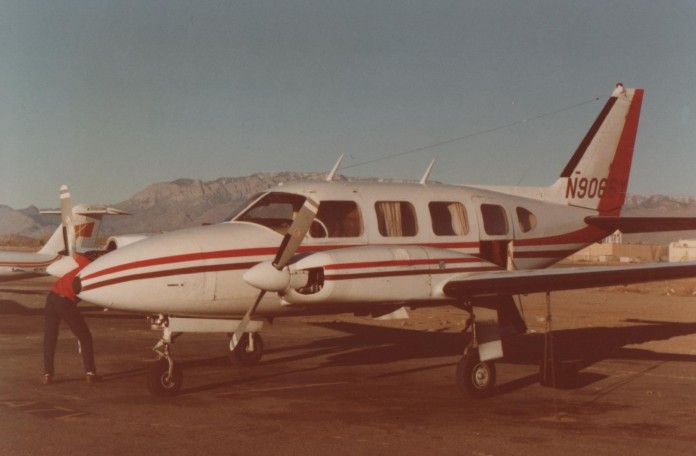
(My trusty “steed” on those many nights spent in the skies over Texas and NM as a noob pilot. Yep, “Bob” (the mechanic charged with keeping N9066Y out of the scrap heap) is working on the right engine…again. It leaked oil like a sieve, I would carry a case of engine oil, and after most stops, would add a quart (or 3), wipe down the cowling, climb back in and launch into low Earth orbit. A great life to be sure…)
One evening while conversing with “Bob”, he filled me with a tale that still sends chills down my spine. I had seen it every day as I drove to the airport, and had wondered many times what it was. It had been a year and a half since the night it took place, but it was still there. The angry ugly, black slash of a wound on the western slope of the Sandia Range. “Bob” casually mentioned something about it, and having wondered about it since day 1, I naturally had to know the story. He told me that, on that horrible Wednesday night, he had been “partying hard” with a gaggle of folks at a residence on the mountain, and the flash, noise, and shock of the event had them soiling their panties, and completely freaked out. To quote my esteemed aircraft doctor, “We just knew that the eggheads at Sandia Laboratories had screwed up and somehow detonated a nuclear device!”

(Words fail me.)
At approximately 11:30 on a wind-swept mid-week night, the aircraft commander of the big, grey Boeing EC-135K (AF Serial # 62-3536) released the brakes and began the long taxi to RWY 08 at Albuquerque-Kirtland Air Force Base. His jet that night was bound for the bright lights of Las Vegas and Nellis AFB, a mere 450 NM to the northwest. His compliment of 19 other Tactical Air Command crewmembers on this HHD (Higher Headquarters Directed) mission were feeling much like he was. They were bone tired, and they could see the end of a very long duty day was finally in sight. It would be just a short “hop, skip and a jump” flight away.
In the cockpit they recited their long-familiar checklists, and moved levers and switches in a way that had become like driving their own cars. Back in the cabin the rest of the crew relaxed, and began making their plans for the “O Club” (or NCO Club as the case may be), with the smiles and excited conversations being born of visons of a hot steak and a cold beer.
Within a few minutes, the big Boeing made the gentle 90-degree left turn to put the centerline of Runway 08 under the nose tires, and the four powerful Pratt and Whitneys spooled up to their throaty roar. Black smoke gushed out of the four tailpipes with the force of a hurricane, and the familiar rumblings gave way to quick, rhythmic vibrations as the pilot in the right seat gave his required call-outs:
“Eighty knots- thrust normal”
“100”
“120”
“V1”
(And a few seconds later)
“Vr- rotate”
(As the big jet lifted into the black night and showed a positive rate of climb…)
The Aircraft Commander called:
“Gear up”
And the Co-pilot responded with a practiced movement of his left arm and his response:
“Gear up”
Barely 30 movements of the second hand later, they were all dead.

(USAF Boeing EC-135K.)
On this night, for unknown reasons, the four screaming Pratt and Whitney TF33 engines simply did not produce enough thrust to keep twenty lives from being erased. Did they not set the engine EPR (thrust) numbers correctly in the cockpit? Did the TF33s need the water-injection for more power, and it simply did not actuate? Were the gusty southeast winds a factor, producing deadly wind shear? The powerful, graceful, gleaming Boeing ALMOST cleared the terrain, but it was not to be…impacting a mere 30′ below the summit.
Aviation is a fickle lover, for “almost” will kill you just as dead as “for sure” will.
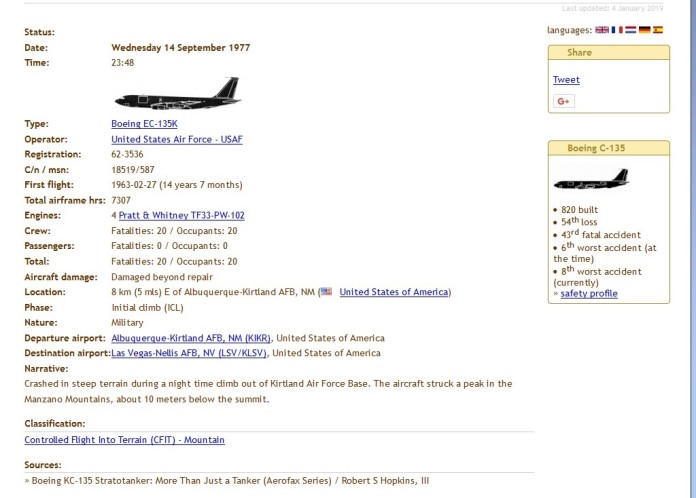
(The accident report. What it DOESN’T say could fill volumes.)
**********
As he finished his story, I stared at the black scar and felt a wave of shock and sadness. Later that night, I launched for Roswell in a warm, purring N9066Y, and couldn’t help but look left at the mountain, its dark wound, and the exact spot where twenty futures came to an abrupt halt.
As I drove past the point forty years later, I looked again, and that same sadness returned.
“Airwing 103?”
“Airwing 103…Lubbock tower…do you read?”
**********

(A Boeing 767-300ER shortly after we arrived at the gate at Tokyo’s Narita Airport. Yep, we do fly freight in the cargo holds of this beauty…and at night…but that’s where the similarities end.)
until next time…


BBall757 we recently purchased a 1972 Cessna 150L that I believe you are quite familiar with. N5305Q, She still wears the Blue and White of her factory paint, albeit a bit faded. We are a up and coming flight school based in Arkansas and intend to train many students in this aircraft. I wanted to reach out after reading about your first logbook entry and offer you my contact information.
Neema Fallon
A&J Aviation
neema @ AandJ.aero
LikeLike
WOW! Thanks a huge amount for the note! I did indeed spend many a wonderful hour in that lovely little machine. Fond memories to be sure!
Thanks again Neema!
LikeLike
Pingback: “A Tale of Two Steves” | BBall's Logbook